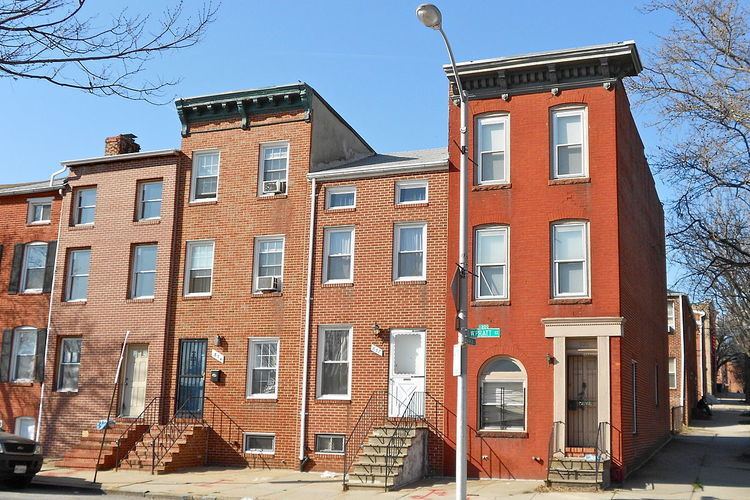Architectural style Federal, Greek Revival Area 20 ha | NRHP Reference # 09000548 Added to NRHP 22 July 2009 | |
 | ||
Location W. Baltimore and Schroeder Sts., south on Schroeder to Lombard; west on Lombard to Carey, south to Pratt, and east on Pratt to Hayes, Baltimore, Maryland Architect Long, Robert Cary; et al. | ||
Hollins–Roundhouse Historic District (also known as B-5144) is a national historic district in Baltimore, Maryland, United States. It is a primarily residential area characterized by 19th century rowhouses. The neighborhood is historically significant due to its association with the development of rail transportation in Maryland. Additional historical significance comes from the neighborhood's association with ethnic immigration to Baltimore. During the 1840s and 1850s the area was a center of settlement for Baltimore's German and Irish communities, many of whom immigrated to the United States to work in the rail industry. Later, from the 1880s to the 1920s, the neighborhood became established as the center of Baltimore's Lithuanian immigrant community. Because of the large Lithuanian population in the area north of Hollins Street, the area became known as Little Lithuania. A few remnants of the neighborhood's Lithuanian heritage still remain, such as Lithuanian Hall located on Hollins Street.
It was added to the National Register of Historic Places on July 22, 2009.
